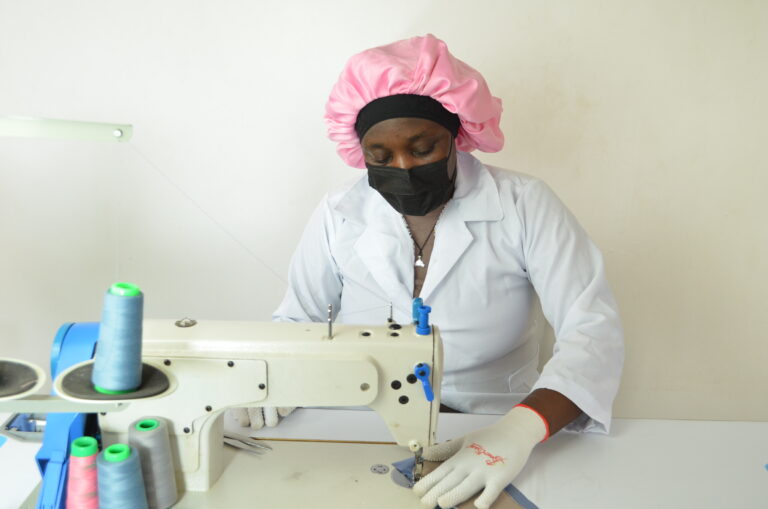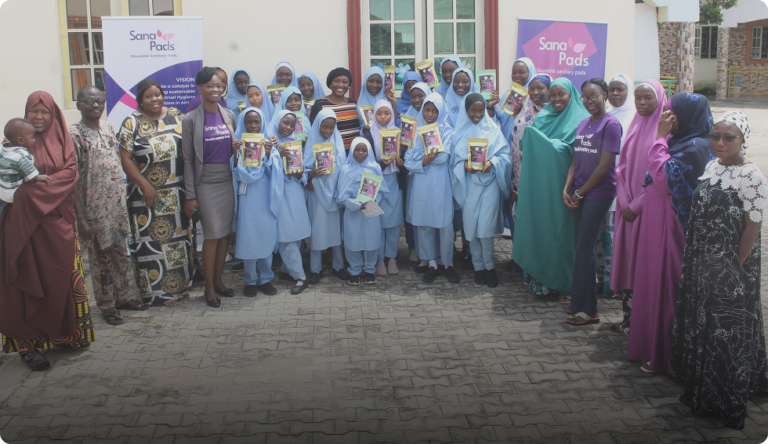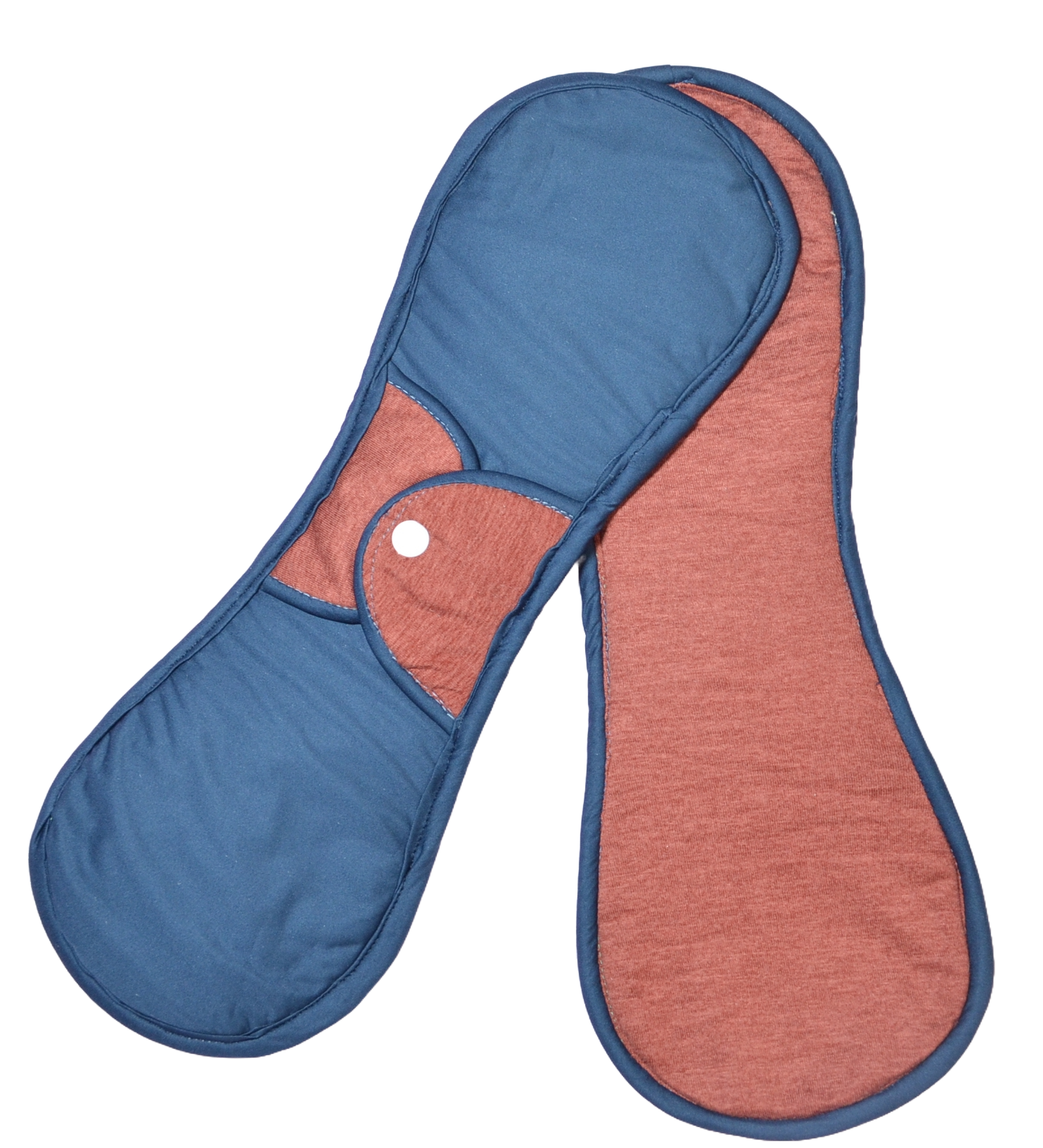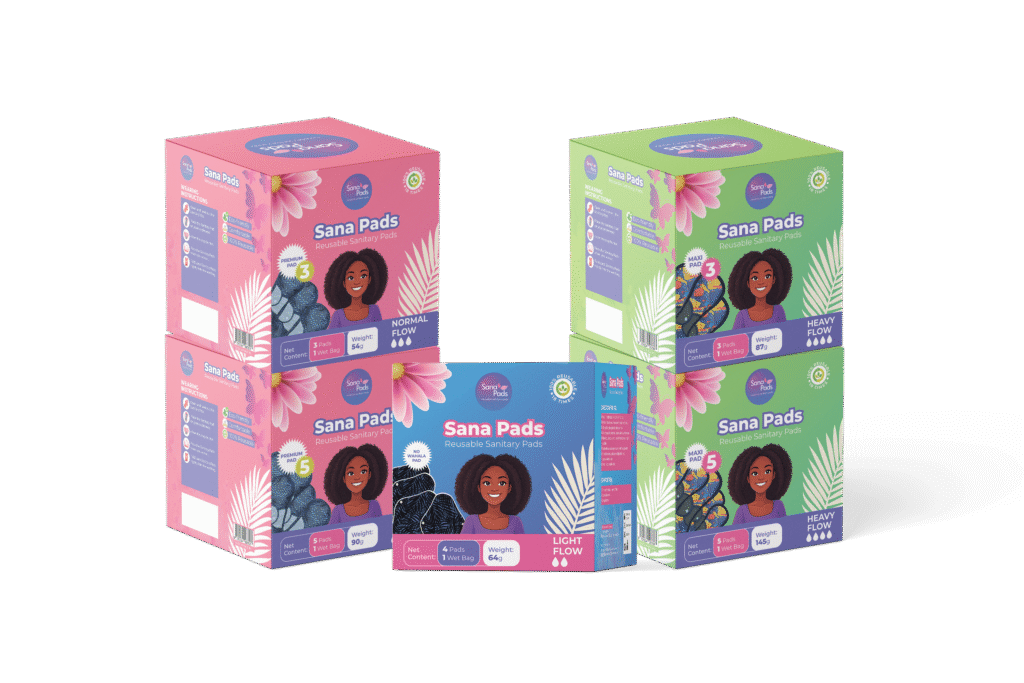Menstrual Health Knowledge
All you need to know about Periods, Sanitary Products and Menstrual Hygiene on one page.

Our Goal
We believe that knowledge about menstrual hygiene is crucial to fight Period Poverty in Nigeria and beyond.
Therefore, we want to make knowledge about period products, menstrual hygiene and self care during periods accessible to every woman and girl in Nigeria by providing simple explanation videos and guides in the most commonly spoken languages.

Overview Reusable Sanitary Pads: Organic Cotton, Bamboo & Micro‑Plastic‑Free Pads

Selling and Donating Reusable Pads

Guide for Distributors and NGOs
Our Reusable Sanitary Pads
Light Flow
Thinner and ligher pad designed for
the last days of your period.
Contains leakproof layer at the back.

Normal Flow



Menstrual Cycle Explained
Definition & Meaning — “What Is the Menstrual Cycle?”
Hey sis, let’s break it down. Your menstrual cycle is that monthly rhythm—like Afro‑beat drums—that gets your body ready for pregnancy. Day 1 is the first day you see blood; the cycle ends the day before your next period starts. That’s the real menstrual cycle definition. Think of it as your body’s planner: grow an egg, build a soft home (the uterine lining), and, if pregnancy doesn’t happen, sweep the place clean. When friends ask “abeg, what is menstrual cycle?” or “wetin be the menstrual cycle meaning?” this is the gist. A colourful menstrual cycle diagram—with estrogen, progesterone, LH and FSH moving like teammates—can help you picture it. Understanding this baseline is power: you’ll know when cramps are normal, when a delay is okay, and when to visit the clinic.
Average Length & Variability — “How Many Days Is a Menstrual Cycle?”
Most Naija babes hear “28 days” and panic when theirs isn’t exact. Relax—normal menstrual cycle length ranges from 21 to 35 days. To answer “how many days is a menstrual cycle?” measure from your first bleeding day to the day before the next one. Maybe last month was 29 days and this month is 27—small gist, stress or late‑night reading for exams can shift hormones a bit. Puberty and final‑year uni stress can stretch or shorten things more. Keep a paper calendar or free tracker app; after three straight cycles you’ll spot YOUR average. But if you’re always under 21 days, over 35 days, or your flow suddenly changes, book time with a healthcare professional—quick checking beats silent worry.
The Four Phases—Your Body’s Monthly Playlist
Picture your cycle as a four‑track playlist:
Menstrual Phase (Days 1‑5): Cleaning track—your body sheds the old lining.
Follicular Phase (till about Day 13): Growth track—FSH helps eggs mature, estrogen rebuilds the lining.
Ovulation (around Day 14 in a 28‑day cycle): Spotlight track—an LH surge pops the readiest egg, giving you the peak chance to get pregnant.
Luteal Phase (Day 15‑28): Chill track—progesterone keeps the lining cosy. If no baby forms, hormones drop and the playlist loops.
Searches like “4 phases of menstrual cycle” or “menstrual cycle days” show many girls want to link mood swings or that sudden energy boost to a phase. Knowing where you are helps you plan study sessions, workouts, or even small chops without guilt.
Key Hormones—The Hidden DJ Crew
Four hormones spin the decks: Estrogen rises first, giving you glow‑up vibes and rebuilding the lining. FSH quietly coaches eggs to grow. When estrogen peaks, it cues the LH surge—the whistle that starts ovulation’s party. Post‑ovulation, progesterone steps on stage, calming things and slightly raising body temperature (handy for BBT tracking). Searches like “estrogen levels in menstrual cycle” or “LH surge menstrual cycle” show that plenty of Nigerian sisters want hormone tea. Plotting them on a simple chart—estrogen and LH peaking mid‑cycle, progesterone ruling later—explains why breasts may feel tender or why you feel supercharged some days. Understanding these DJs helps when you’re reading lab results or deciding if it’s time to talk contraceptives with your nurse.
Normal vs. Abnormal—Quick FAQ
What counts as normal?
Cycle length 21‑35 days, bleeding 2‑7 days, mild cramps, mood shifts—nothing too heavy to stop your day.
When is it irregular?
If cycles are shorter than 21 days, longer than 35 days, or swing wildly each month, that’s irregular.
Can stress delay my period?
Yes! Exam hall tension, NYSC posting worries, or family gist can raise cortisol and push ovulation late.
Is two periods in one month okay?
Could be a naturally short cycle, but if it repeats, check for hormone imbalance or fibroids.
When should I see a doctor?
Heavy bleeding that soaks a pad every hour, severe pain, sudden changes, or no period for three months (amenorrhea). Knowing the normal menstrual cycle range lets you protect your health and keep shining.
How to Track & Calculate Your Cycle
Manual Counting Method
Okay, so the most basic way to keep tabs on your cycle is by good old-fashioned counting. Think of it like this: Day one of your cycle is the very first day you see your period blood. Grab a calendar or your phone’s notes app, and mark that day clearly. Then, you simply count the days until your next period starts. That total number of days is the length of your menstrual cycle.
Now, why is this important? Well, knowing your cycle length can help you predict when your next period might arrive. For most girls and young women, a typical cycle is around 28 days, but it can totally vary! Some have shorter cycles, like 21 days, and others have longer ones, up to 35 days. Keeping track for a few months will give you a better average and help you understand your own unique rhythm. This method is super simple and doesn’t require any fancy tools – just you and a way to mark the dates. Plus, it really helps you become more aware of what’s going on in your body.
Printable Chart & Calendar
If you like things a bit more visual, using a printable chart or calendar can be a fantastic way to track your cycle. You can find tons of free printable menstrual cycle charts online – just search for “period tracker chart” or “menstrual calendar.” These charts often have spaces to mark the start and end dates of your period, note any symptoms you might be experiencing (like cramps, headaches, or mood changes), and even track your basal body temperature if you’re getting really detailed.
Alternatively, you can simply use a regular wall calendar or a diary. Just make a special mark (like a red dot or an “P”) on the first day of your period each month. You can also use different symbols or colors to note other things, like when you’re feeling extra tired or if you have any spotting. Having it all laid out visually can make it easier to see patterns and predict your next period at a glance. Plus, it’s a great way to have a physical record that you can refer back to.
Using Online Calculators & Apps
In this digital age, there are so many cool online calculators and apps designed specifically for tracking your menstrual cycle! These tools can be super handy because they often do the counting and predicting for you. You just input the first day of your last period, and they’ll estimate when your next period is due, as well as your fertile window (the days when you’re most likely to get pregnant).
Many of these apps also allow you to log other information, like your mood, energy levels, cervical mucus changes, and even your sexual activity. Over time, the app learns your cycle patterns and can give you more accurate predictions. Some popular apps even have features like reminders for when your period is approaching or when you might be ovulating. It’s like having a personal period guru right in your pocket! Just make sure you choose a reputable app and remember that these are still estimations, so listen to your body too.
Safe‑period math
Now, let’s talk about something called the “safe period.” This is based on the idea that there are certain days in your cycle when you’re less likely to get pregnant. Traditionally, it’s often considered to be the days right after your period ends and the days leading up to your next period. The logic is that you’re not fertile during your period and for a few days after, and then again in the days just before your next period starts because ovulation (when an egg is released) has already happened.
However, it’s really important to know that relying solely on the safe period can be risky for preventing pregnancy. Cycle lengths can vary, and ovulation can sometimes happen at unexpected times, especially if your cycle isn’t super regular. Sperm can also survive in your body for several days. So, while understanding the general timing of your cycle can be helpful, it’s not a foolproof method of contraception. If you’re sexually active and want to prevent pregnancy, it’s best to explore more reliable methods with a trusted adult or healthcare provider.
Integrating data with ovulation tests
If you’re looking to get even more precise about tracking your cycle, especially if you’re trying to conceive or want to understand your fertile window better, you can integrate data from ovulation tests. Ovulation tests work by detecting the surge in luteinizing hormone (LH) in your urine, which usually happens about 24-36 hours before you release an egg.
You can use these tests around the middle of your cycle, based on your usual cycle length. When you get a positive result, it indicates that you’re likely ovulating soon. You can then combine this information with your manual tracking, calendar notes, or cycle tracking app to get a clearer picture of your fertile days. Some apps even allow you to log your ovulation test results alongside your period dates and other symptoms, giving you a comprehensive overview of your cycle. This combined approach can be really empowering for understanding your body’s natural rhythms and timing.

